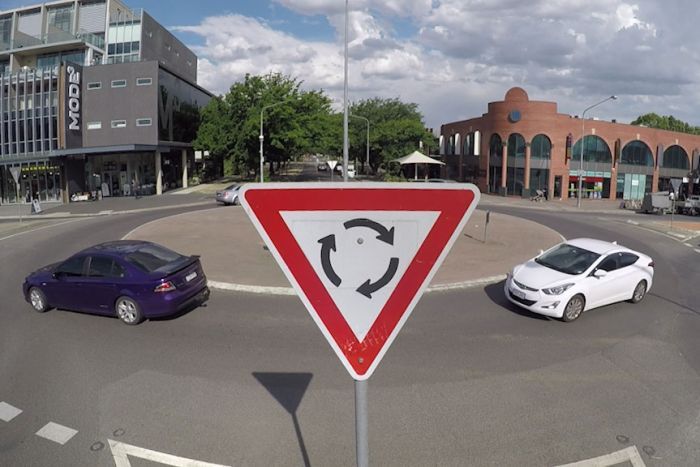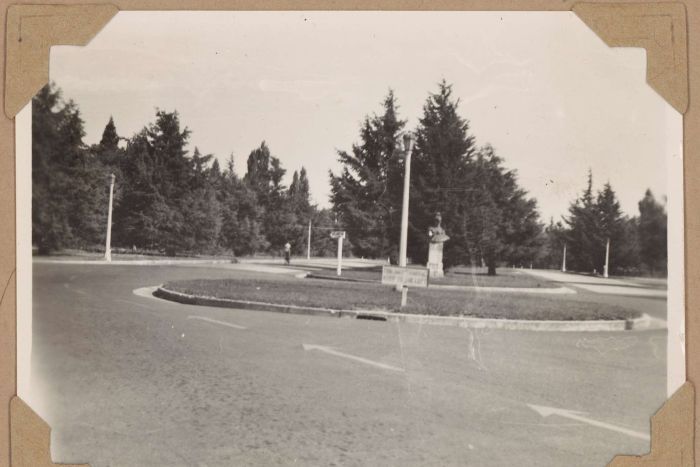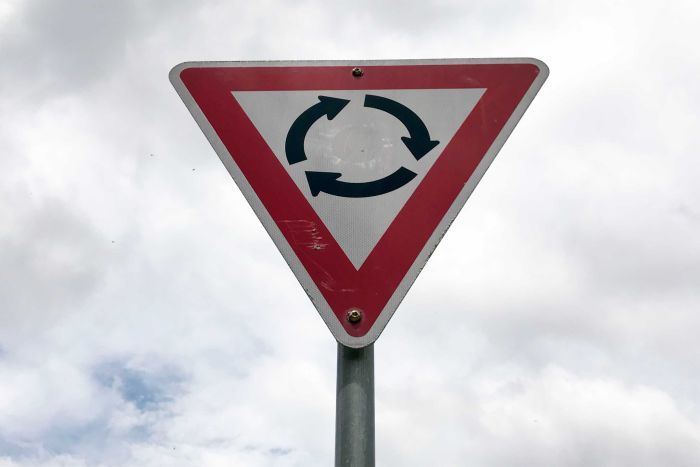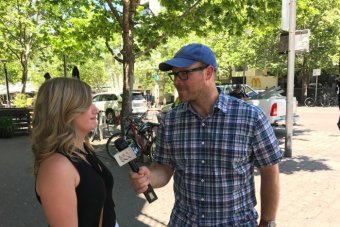Is Canberra the roundabout capital of Australia?
Posted
 Photo:
Roundabouts force motorists to slow down, reducing the severity of accidents. (ABC News: Andrew Kennedy)
Photo:
Roundabouts force motorists to slow down, reducing the severity of accidents. (ABC News: Andrew Kennedy)
Tourists often poke fun at Canberra's apparent love of the humble roundabout but does the city really have more roundabouts than most?
This week's Curious Canberra question comes from Kial Stewart and it's one we've received many times.
"I've spent a couple of years living away and quite often when I introduce myself as being from Canberra and a Canberra native, I usually get questioned about the roundabouts," he said.
"I'm interested to see if... we do have an unusually large amount of roundabouts and a follow-up question would be - is that actually a bad thing?"
To answer his question, I spoke to some of the city's leading academics about the ins and outs of Canberra's most talked about traffic feature.
How many roundabouts are there?
I approached Roads ACT Director Tony Gill for the hard numbers.
"Canberra has 406 roundabouts and 276 sets of traffic lights," he said.
"Most of the roundabouts are in residential areas and most of the traffic lights are on the main road network."
But how does Canberra compare to other cities in Australia? Now there's a question!
I looked at the number of roundabouts in Melbourne, Adelaide and Sydney.
Our friends down south keep pretty good records of their circular intersections - Melbourne has 3,858 roundabouts, which does seem like a lot.
While over in Adelaide they are blessed with 773 roundabouts.
Our nearest neighbours in the Emerald City of Sydney were a little trickier to pin down.
There are currently 30 separate city councils in metropolitan Sydney and only 15 got back to me with figures.
Number of roundabouts per capita:
- Canberra: 1,000 people per roundabout
- Melbourne: 1,200 people per roundabout
- Sydney: 1,600 people per roundabout
- Adelaide: 1,700 people per roundabout
Adding those together gave me 1,128 roundabouts but I was after a number for the whole city.
I worked out how many people lived in the council areas I did have figures for, which helped me work out roughly how many roundabouts there were per capita.
If my calculations are correct (1,128 roundabouts for 1.75 million people in the 15 council areas) metropolitan Sydney would have, on average, about 1,600 people per roundabout.
So, comparing apples with apples, I worked out Melbourne (with a population of 4.5 million) has approximately 1,200 people per roundabout.
Adelaide (1.3 million people) has about 1,700 people per roundabout.
And Canberra has roughly one roundabout for every 1,000 people - the most per capita.
Why does Canberra have so many?
 Photo:
An early roundabout on Commonwealth Avenue near Albert Hall. (Supplied: National Library of Australia)
Photo:
An early roundabout on Commonwealth Avenue near Albert Hall. (Supplied: National Library of Australia)
The earliest example of a Canberra roundabout that I could find was this one from 1945.
It showed me that Canberra has a long history with traffic circles and I got in touch with some academics in the field of urban design and architecture to find out more.
Dr Cameron Gordon is an urban transport expert from the University of Canberra.
"The traditional justification for roundabouts is safety," he said.
"The thing road safety people are thinking about is - how do we design the safest intersections? And that's two-fold, minimising accidents and when you have an accident, it's less serious."
Dr Gordon said that roundabouts are safer than other intersections, in part because they force drivers to slow down.
While they may be safer, Dr Gordon said Canberra's roundabouts also have a tendency to confuse.
"[Roundabouts] are generally designed with traffic flow in mind… they [planners] don't often think about what we would call 'wayfinding', for example signage [and] time to make a decision."
"That's probably the bigger problem for visitors. I had the same problem when I moved here, it took me about a year and half to not get lost!"
And that could explain why outsiders find Canberra's roundabouts so memorable.
Better than other means of traffic control?
 Photo:
Roundabouts have an impact on how pedestrians experience a city. (ABC News: Tom Stewart-Moore)
Photo:
Roundabouts have an impact on how pedestrians experience a city. (ABC News: Tom Stewart-Moore)
Our questioner Kial wanted me to find out whether roundabouts were a good or bad thing, so I had to find someone who could make that value judgement for us.
Milica Muminovic is an Assistant Professor of Architecture at the University of Canberra. When I asked whether roundabouts were good for the city, she was enthusiastic.
"Yes, why not? There aren't two cities the same in the world, so I think that's a good thing," she said.
And while we've been focussing on the impact roundabouts have on the city's motorists, Milica said they change the city for pedestrians too.
"That geometry also extends the size of the public sphere, which means that walking distances become quite large in the city."
Post your own Curious Canberra question and subscribe to the podcast on iTunes.
About our questioner:
Kial Stewart is a postdoctoral researcher at the Research School of Earth Sciences, Australian National University.
He considers Canberra's roads to be the best in the country and prefers roundabouts to traffic lights.
He worries though, that traffic lights might soon be favoured over roundabouts.











